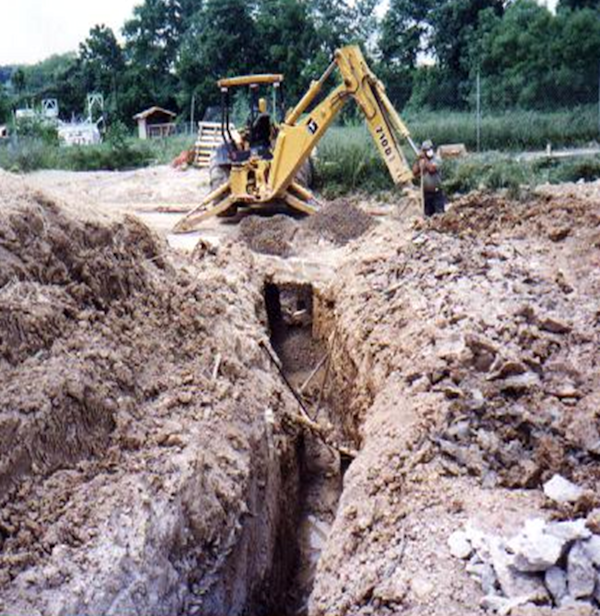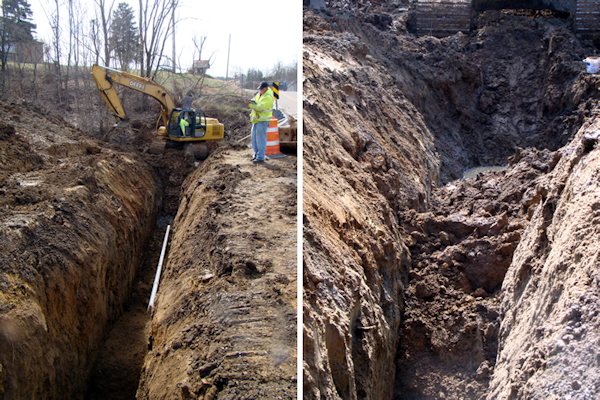Case Studies
The following case reports of trenching accidents investigated by OSHA only illustrate how seemingly innocent workplace activities can have deadly consequence, especially when it comes to excavation work.
- Two employees were installing 6" PVC pipe in a trench 40' long x 9' deep x 2' wide. No means of protection was provided in the vertical wall trench. A cave-in occurred, fatally injuring one employee and causing serious facial injuries to the other.
- An inadequately protected trench wall collapsed, killing one employee who had just gotten into the trench to check grade for installation of an 8" sewer line. The trench was 20-25 feet deep and had been benched about one bucket-width (4 feet) on each side. At the time of the collapse, a backhoe was still extracting soil from the trench.
- Four employees were in an excavation 32' long x 7' deep x 9' wide boring a hole under a road. Eight-foot steel plates used as shoring were placed against the side walls of the excavation at about 30-degree angles. No horizontal bracing was used. One of the plates tipped over, crushing an employee.
- An OSHA investigator was performing a worksite inspection on a 10 ft deep trench being dug by ABC Construction. He directed an employee to exit the trench believing collapse was imminent. Within five minutes, the collapse occurred and could have buried the worker under six to seven feet of soil. Workers were ordered out of the trench just moments before a portion collapsed avoiding possible injury or loss of life. OSHA standards mandate that all excavations 5 feet or deeper be protected against collapse.
Knowledge Check Choose the best answer for the question.
4-8. OSHA standards mandate that all excavations _____ be protected against collapse.
You forgot to answer the question!


